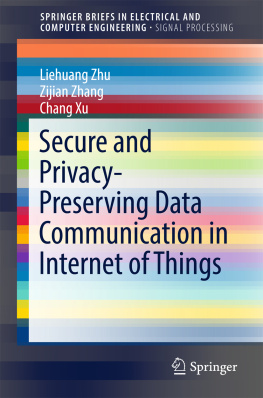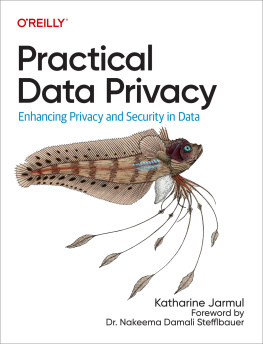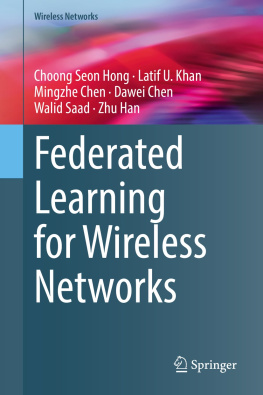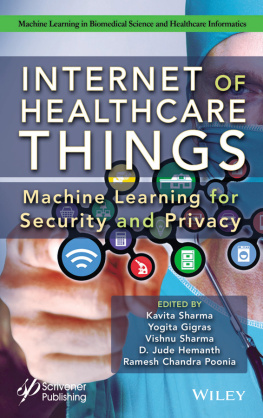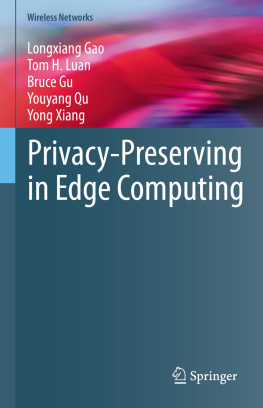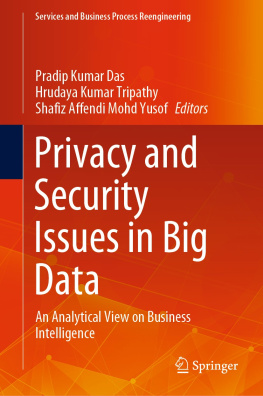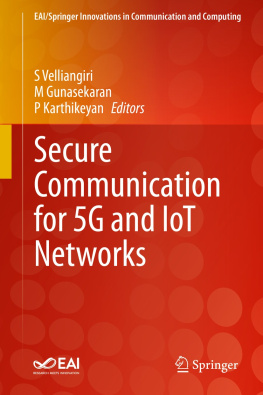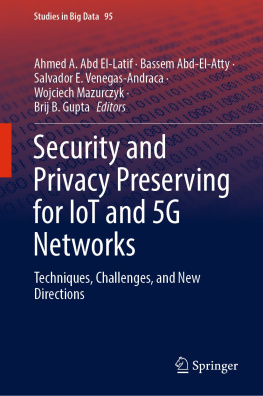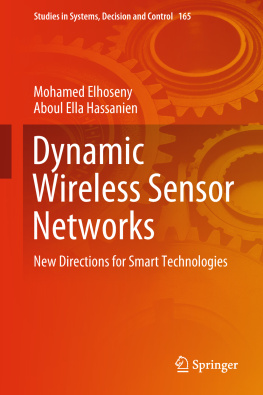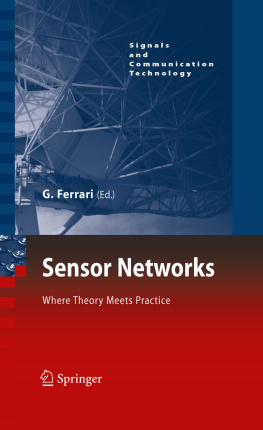1. Introduction
The Internet of Things (IoT) has altered our world into a more physically connected and formed a global network, enabling higher order applications. As smart devices and cars around us are able to freely communicate with each other, more opportunities and advantages are brought to us. However, as our information which is stored inside these objects is disclosed and shared, our security and privacy concerns call for a efficient protection mechanism more than ever. In this book, we focus on the security and privacy protection issues in three areas of IoTs, namely wireless sensor networks, smart grid and vehicular ad hoc networks. We aim to provide an extensive overview of existing work.
Wireless sensor networks (WSNs) consists of a large number of sensors which have limited capabilities and the sensors are deployed in a remote and unsurveillant field. WSNs renders possible solutions to many problems in both civilian and military applications. Therefore, it is challenging to come up with efficient ways to collect desired data. In order to reduce the communication cost in transmitting data, data aggregation technique is adopted to achieve this goal.
However, while data aggregation have the advantage of improving network bandwidth and energy utilization, it will in turn affect other metrics of the network. Moreover, there is a conflict between security and data aggregation. On one hand, security schemes require the sensors to encrypt the sensed data before transmission and then base station decrypt the received message to obtain plain data. On the other, data aggregation schemes work efficiently with plain data to perform aggregation on aggregate sensors. Because of these conflictive goals in designing WSNs protocols, security and data aggregation must be designed such that data aggregation can be implemented without compromising security.
The deployment of smart grid across the globe has enabled power companies to efficiently provide energy to customers. Companies can estimate the usage of energy based on the readings received from the smart grid in turn reducing the use of natural resources. Smart grid has also benefited customers, as many companies generally adjust the energy usage cost based on time and similar factors, customers can track these times and adjust their energy needs accordingly, such as using power saver mode for various appliances. The implementation of smart grid alone will not reduce energy usage, programmable appliances are also required that will interact with the meter to adjust resource usage appropriately.
Smart grid can greatly stabilize energy usage throughout the day to avoid energy shortage due to a surge in use during peak hours. By using smart grid companies can forecast energy usage allowing them to react appropriately to needs of their customers. A large number of energy suppliers adjust the price of energy based on current usage. Customers can take advantage of this by adjusting their energy usage to non-peak times for non-essential tasks such as laundry to save money, unfortunately this is not always possible.
At the present time, vehicles have played a crucial role in peoples life. As the worlds population grows, the number of vehicles on the road is increasing by a wide margin. It is estimated that there exist more than 1 billion vehicles worldwide. Extensive efforts from both industry and academia have been devoted to improving the driving safety.
Vehicular ad hoc networks (VANETs) is a specific type of Mobile Ad hoc Network (MANET). Different from MANET, VANET has some unique characteristics. The topology of VANET usually change frequently since vehicles often move at high speed. Highly dynamic topology could lead to disconnections especially in sparse network. Vehicles mobile pattern is usually influenced by traffic environment, roads structure and so on. Besides, vehicles not only communicate with each other, but also get information from and send data to roadside units.
In VANET, there also exist some security and privacy problems which needs to be solved. Generally speaking, the adversaries for VANET could be classified into several types: insiders and outsiders, malicious and rational attackers, and active attacker and passive attacker. To protect the drivers from potential dangers, each vehicle will be provided with the required surrounding information by means of IVC. VANETs are emerging as a new technology formed among moving vehicles.
In the three main chapters, we first introduce the problems, network model and design goals. Second, we present the cryptographic and non-cryptographic schemes. Then, we conclude each chapter.
2. Secure Data Aggregation in Wireless Sensor Networks
Wireless sensor networks (WSNs) usually consists of a large number of sensors which have limited capability in terms of communication, computation and memory []. These sensors are deployed in a remote and unsurveillant field and they autonomously form before they engage in a predefined sensing task. WSNs renders possible solutions to many problems in both civilian and military applications, including temperature monitoring, wildfire detection, animal tracking, and battlefield surveillance. Therefore, it is challenging to come up with efficient ways to collect desired data, given the sensors only have simple hardware and software resources. For instance, most of the sensors only have a short lifetime due to the non-rechargeable battery which is a bottleneck for designing WSNs protocols.
Therefore, in order to reduce the communication cost in transmitting data, data aggregation [. As depicted in the figure, two groups of sensors are structured in the from of cluster and tree before they start gleaning environmental information (e.g., the arrival of tanks, locomotion of battleship) in their targeted regions. When the base station queries the sensor network, each sensor will send its data along a multi-hop path containing a certain number of aggregate sensors (e.g., compute the sum, average) and relay sensors which lead to the base station, instead of uploading data to it directly. From the example, data aggregation reduces the overall data transmissions, therefore improving the bandwidth and service life of the network.
Data aggregation performed by the relay nodes will bring about more benefits with the increase of network scale. However, while data aggregation have the advantage of improving network bandwidth and energy utilization, it will in turn affect other metrics of the network, such as delay and security []. On the other, data aggregation schemes work efficiently with plain data to perform aggregation on aggregate sensors. Because of these conflictive goals in designing WSNs protocols, security and data aggregation must be designed in a collaborative way such that data aggregation can be implemented without compromising security.
The importance of achieving security and data aggregation simultaneously have led many researchers to focus on secure data aggregation problem. In this chapter, we aim to provide an extensive overview of secure data aggregation schemes in WSNs. Specifically, we will introduce the network model with main design goals and cover several eminent work in this area. Secure data aggregation problem has been studied over the past ten years and still has a potential to offer interesting research directions or opportunities which can be adopted in other research areas, such as participatory sensing []. Meanwhile, we also aim to give a starting point for researchers interested in secure data aggregation by introducing the pertinent work and future research directions.

